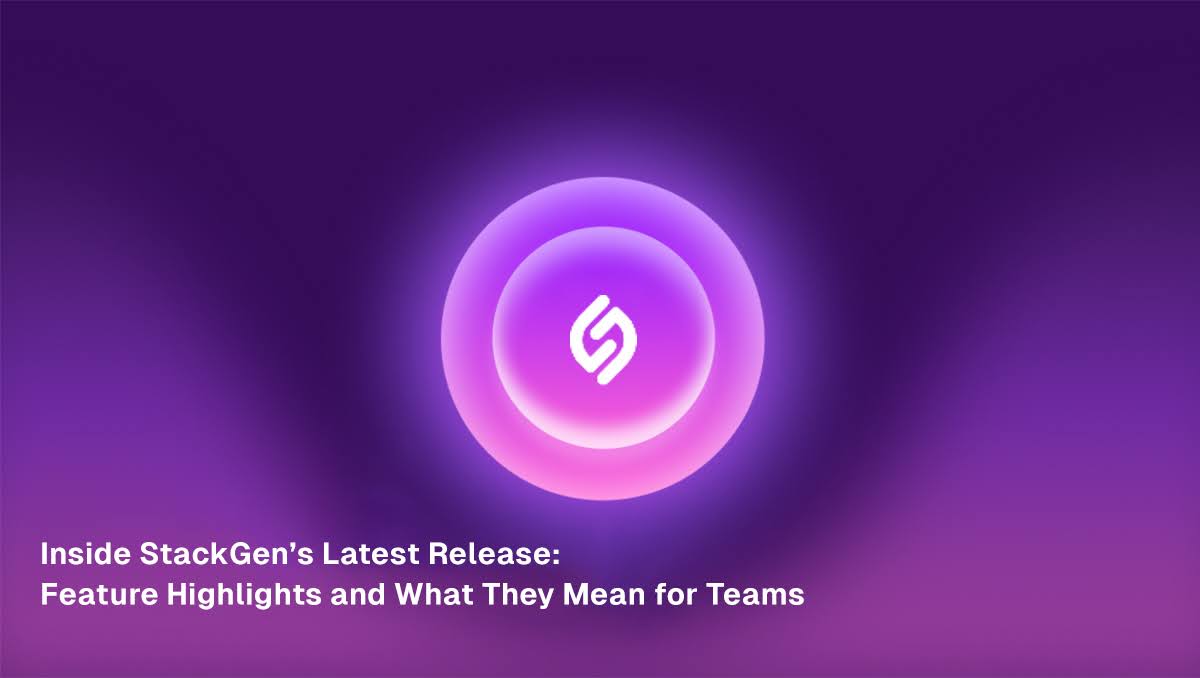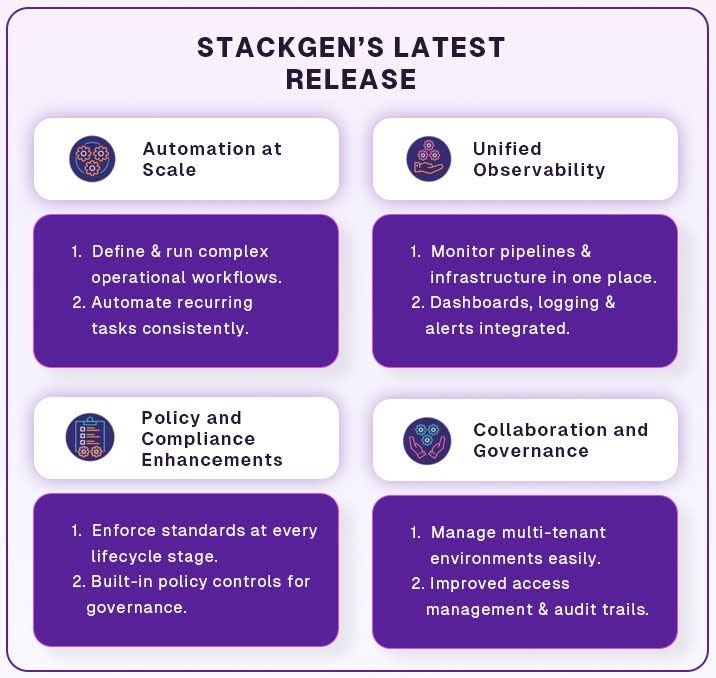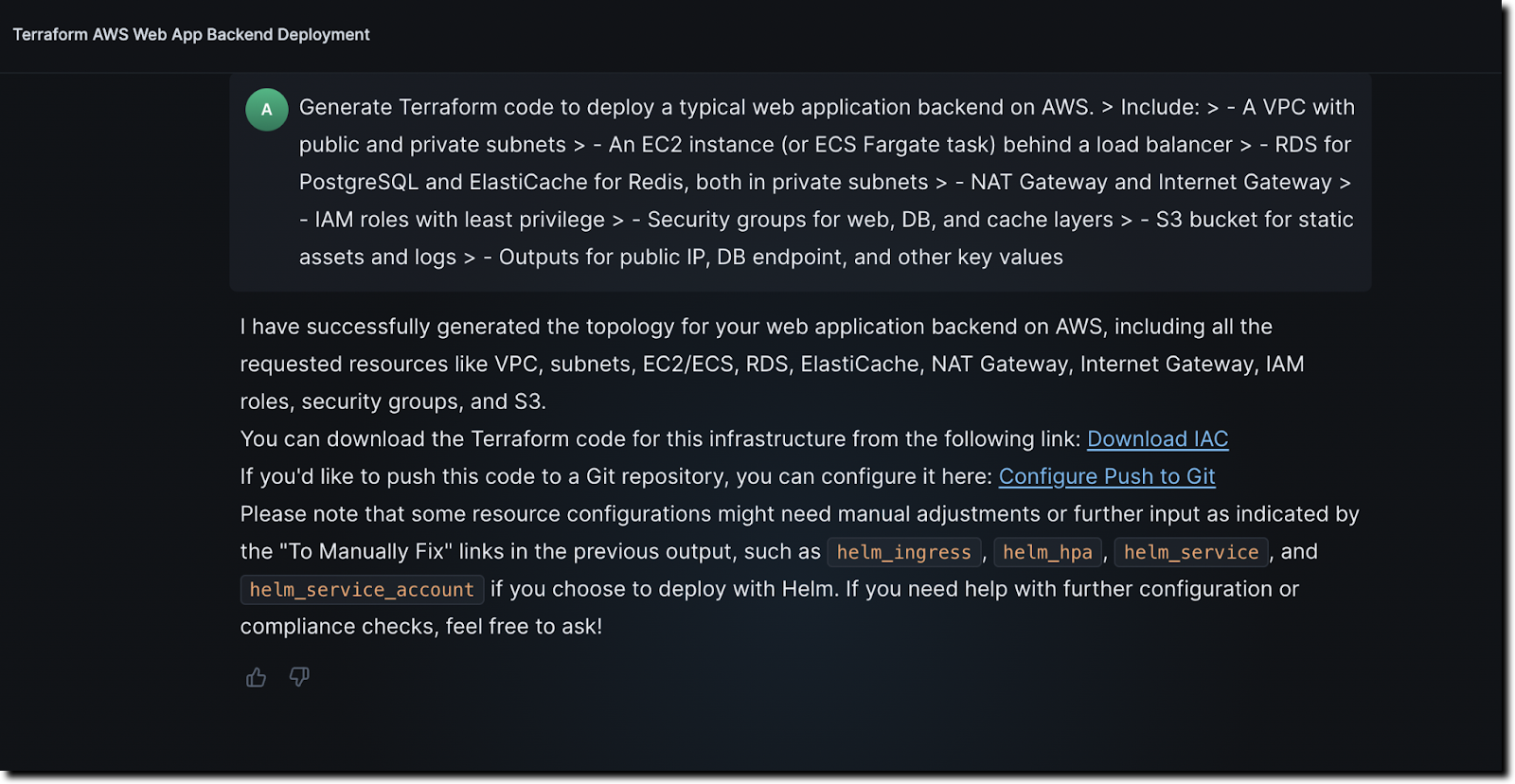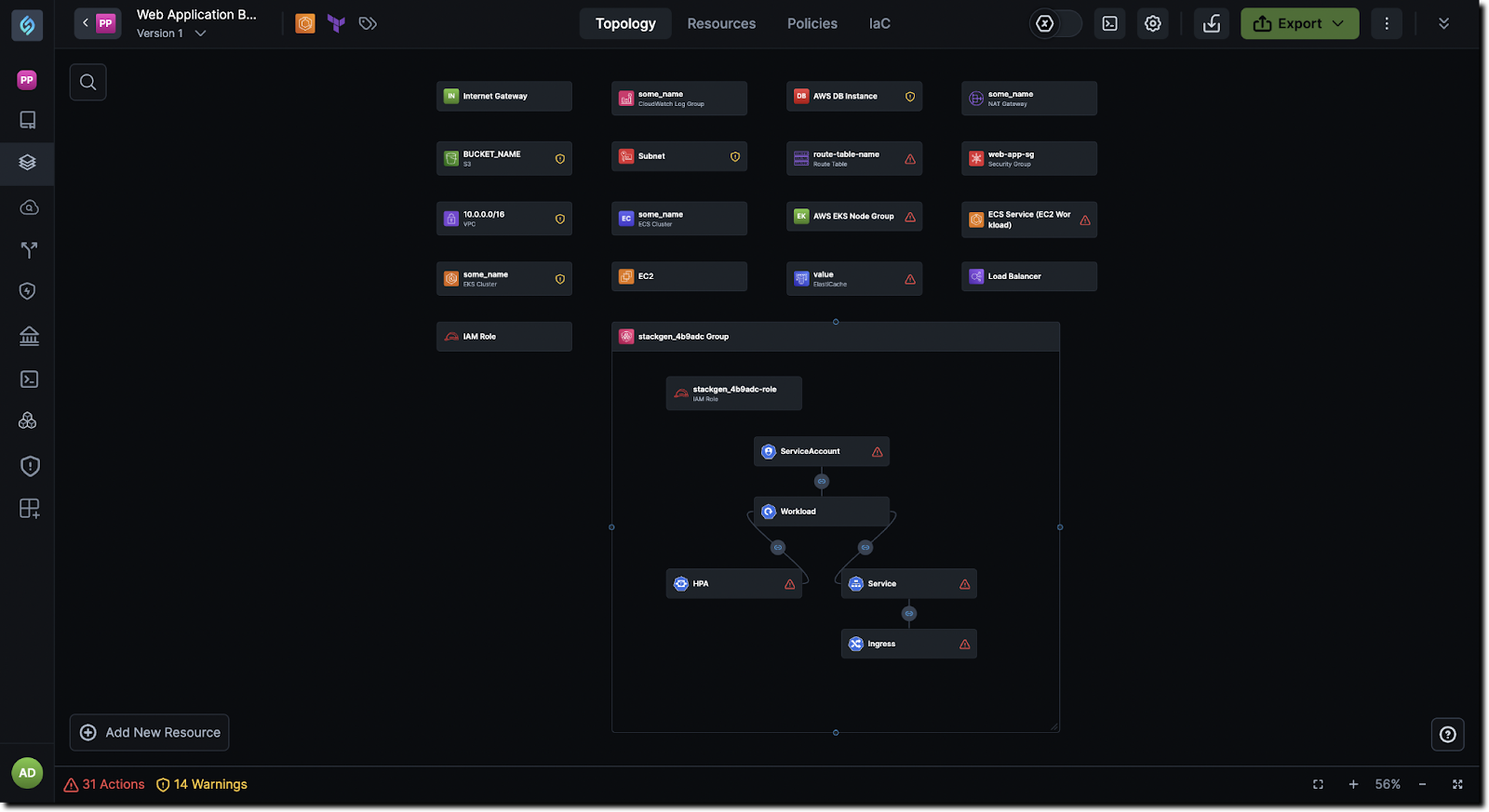Summary
- StackGen's latest release goes beyond just Infrastructure as Code (IaC) by adding orchestration, Aiden-powered observability, and policy enforcement. This transforms it into a unified platform for managing infrastructure and operations across teams.
- The new workflow automation reduces the need for manual tasks, enabling teams to automate repetitive processes such as environment setup, configuration, and deployment. This results in faster onboarding and more efficient operations.
- With Aiden, StackGen now provides built-in monitoring and alerting capabilities. Teams can access real-time dashboards and logs to quickly identify and resolve issues without leaving the platform.
- StackGen now includes built-in policy controls to ensure compliance throughout the infrastructure lifecycle. Automated security checks, role-based access policies, and audit trails help teams stay aligned with organizational requirements.
- The multi-tenant enhancements make it easier for teams to collaborate while maintaining control over shared resources. Features such as enhanced access control and audit history ensure accountability while supporting faster workflows.
- With integrated automation, observability, and compliance, StackGen helps teams deliver solutions more quickly without compromising governance or security. This results in reduced time-to-production and more reliable deployments.





